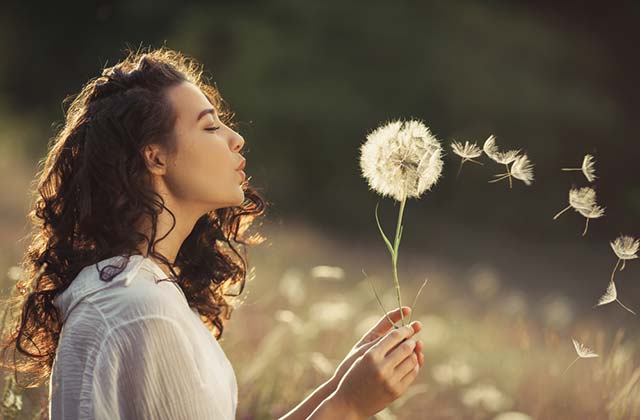Springtime means pretty blooming trees and green leaves. It’s the time that paves the way for warmer weather. But for some, it means a long stretch of annoying allergies.
Temperatures across the country vary. The start of the allergy season depends on the conditions in each province. Factors include location, temperature and moisture levels.
When a foreign substance comes in contact through eating or inhaling, the body’s immune system churn out antibodies. These antibodies remain on the alert and react to allergens; triggering factors such as pollen, bee venom, pet dander, moulds or dust mites.
Allergies happen when the immune system mistakes the allergens as a dangerous invader. The antibodies jumpstart the release of histamines, the immune system chemicals, which cause allergy symptoms.
Some people believe that their little ones can’t have seasonal allergies. But just like kids and adults, babies can experience seasonal allergies. It’s just how the body reacts to something.
It takes time for an allergy to develop. It would depend on how long enough is your little one has been exposed to the allergen. There is a threshold that must be reached before an allergen causes a reaction. It may take months to years.
- Seasonal Allergies
Seasonal allergies are very rare in kids under one year old. At this age, the baby is mostly to experience food allergies. Most cases of seasonal allergies occur between the ages of 3 and 5 years old. However, your little one may begin to suffer as early as 1 or 2 years old.
Pollen from trees, flowers and grass tend to spike up during spring. They release tiny particles to aid the fertilization of other plants.. This means that your baby may experience allergies when all the plants are starting to bloom.
Pay attention to your baby and be prepared to handle allergies as springtime comes around by March.
At most times, distinguishing cold from allergies in babies and toddlers is pretty hard to tell. You might think that she is dealing with persistent bad colds for having watery eyes, an itchy nose and sneezing. These are the same common symptoms of springtime allergies.
If these symptoms last for several weeks or even months, it’s more likely an allergy. Cold symptoms are worse for the first few days, gradually ease up and go away within a couple of weeks.
- Allergic rhinitis or hay fever
This the most common type of allergy. When allergens such as pollen, mould or dander come in contact with your baby’s nose and eyes, it causes inflammation accompanied by red, itchy and watery eyes.
- Allergies From Mould
Mould is a type of fungus that grows on the surface of organic matter. The colour can be purple, green, orange, black or white.
Mould can be found almost everywhere including your basement, underneath your kitchen sink or your bathroom. Just like pollen, mould spores travel through the air and can be washed away by water. Mould can be a culprit for your baby’s allergies.
- Dust-related allergies
Dust and dust mites appear in almost every home. When inhaled by your baby, these trigger allergy symptoms. Your pet’s dead skin cells or dander can also trigger allergy symptoms in your baby. Also, fur, feathers, urine and saliva can cause allergic reactions.
Allergy symptoms are no fun, especially for babies. You can keep a note to identify what triggers your baby’s allergies. Make a diary to track activities and what you feed your baby. Note when the symptoms and what you have done to alleviate them. This will help you identify the allergens that you can avoid.
There are no cures for allergies, unfortunately. What can be done is controlling and curing the severity of the symptoms. If you think you have done all your best at home to soothe your baby, reach out to your doctor for medical recommendations. Of course, you worry as a parent. You keep your baby’s surroundings free of allergens.
You should consider putting these home routines into practice:
Generally, keep your house from dust. Regularly clean the house and the room, when your baby is not in that room. Vacuum floors and carpets once a week at a minimum.
Avoid items such as heavy drapes. It could attract dust.
Fold and keep carpets and rugs in the cupboard for later use.
Avoid going outdoors at peak pollen times, usually the middle of the day and windy days. If you want an outdoor walk with your baby, do it in the early morning or evening.
When you get inside, be sure to wash your hands and your baby’s hand. This is to remove any pollen. You may also bathe your baby to be sure to wash away pollen traces.
During warmer months, keep windows closed and air conditioners on.
Laundry sheets and towels in hot water to limit dust and dander at home. Also, avoid drying your clothes outside as pollen can stick to them.
If you want your baby tested for seasonal allergies, you can make an appointment with a walk in clinic Edmonton or an online doctor.
Many babies outgrow most allergies as they get older. With proper precautions and treatment, you can keep your baby safe and healthy.

